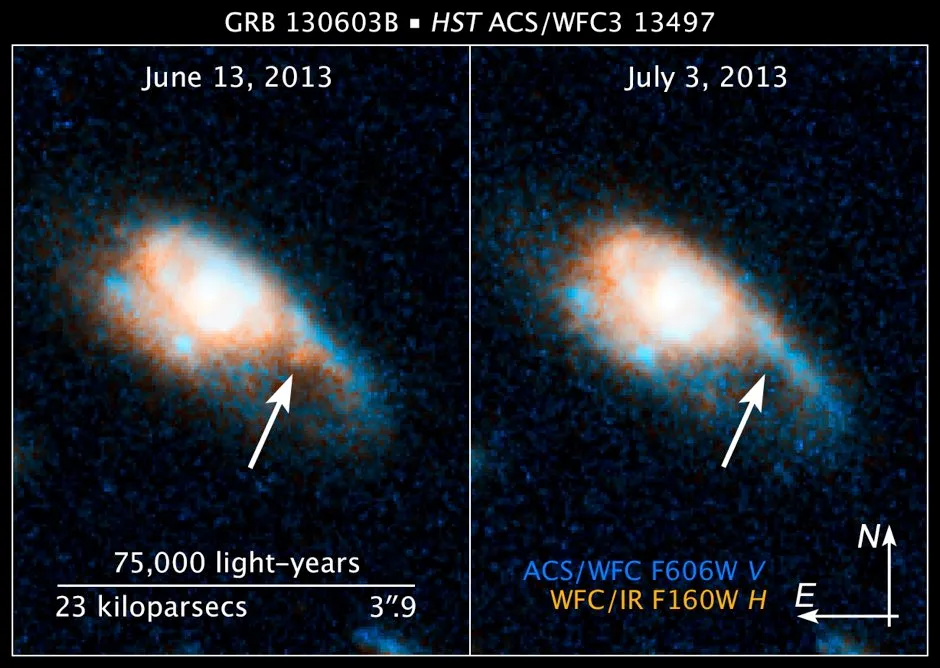
This fuzzy-looking galaxy was home to one of the most energetic events in the Universe: a gamma-ray burst (GRB). These flashes of gamma-ray radiation are an enigma because they’re so rare - a typical galaxy produces only a few every million years. Yet they release as much energy in a few seconds as our Sun does in 10 billion years.
On 3 June 2013, a GRB lasting one-tenth of a second occurred, and was spotted by NASA’s Swift satellite. When the Hubble Space Telescope looked 10 days later, it found an infrared glow where the burst had been. But by 3 July it had faded.
This disappearing glow was the dying embers of another kind of cosmic explosion - a kilonova – believed to be the result of extremely dense stars called ‘neutron stars’ merging. Since the kilonova was found in the same location as the GRB, it was the ‘smoking gun’ revealing that short GRBs could well be caused in the same way.
The kilonova was investigated by Prof Nial Tanvir of Leicester University, who says Hubble played a vital role. “Although Swift discovered this particular short gamma-ray burst, and observations from ground-based telescopes gave us its precise position and distance, Hubble was the only option for seeing the faint kilonova emission.”
Discover more about the Hubble Space Telescope:
- 9 of Hubble’s greatest discoveries
- Beautiful Hubble Space Telescope images you probably haven’t seen before
- 10 future space missions to look forward to
- Who really discovered Hubble’s Law?
From BBC Sky at Night Magazine:
- Hubble at 30: three decades of the famous space telescope
- 'How we serviced Hubble': Mike Massimino reveals all
- How Hubble’s successor the James Webb Space Telescope will observe the Universe
- Astronaut Kathy Sullivan on launching the famous space telescope
- What was wrong with Hubble’s mirror, and how was it fixed?
- Radio Astronomy Podcast: 30 years of the incredible space telescope
- How did the space telescope come about?
- What Hubble's launch meant to me, as an amateur astronomer
- How Hubble changed our view of the Universe
- Why did astronauts service the Hubble Space Telescope?
- How the Hubble Space Telescope is used to study exoplanets
- A history of the Hubble Space Telescope